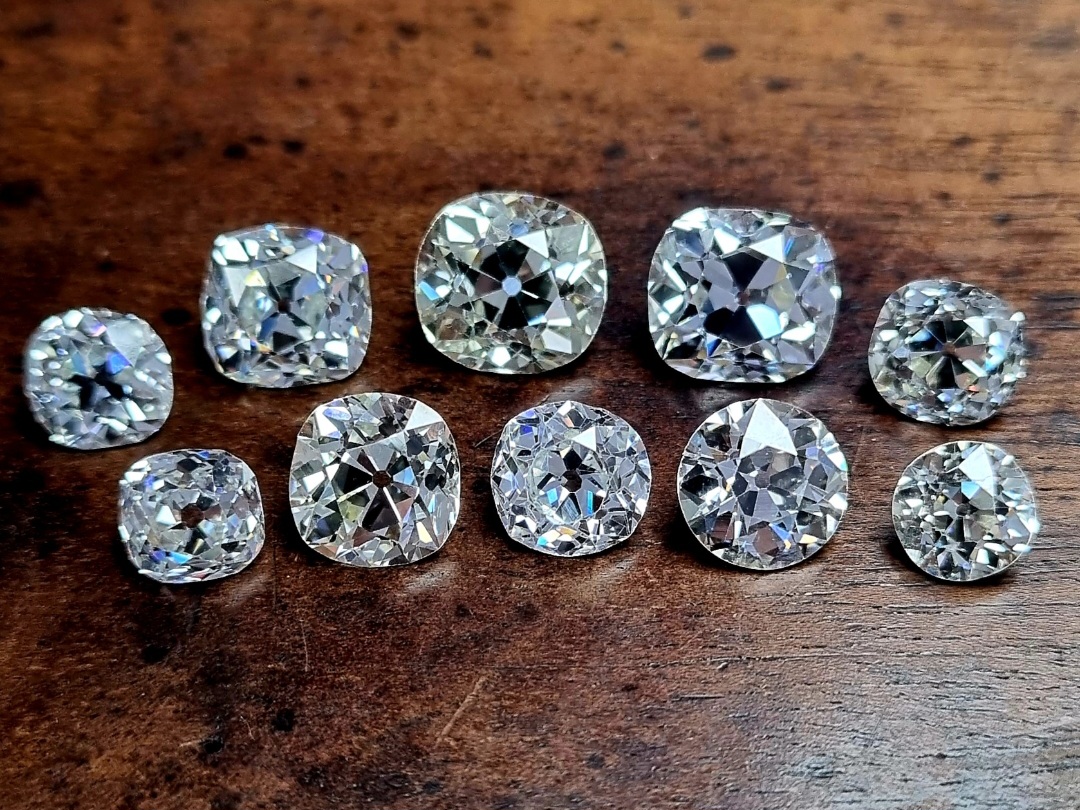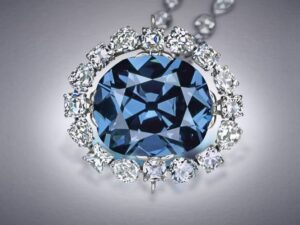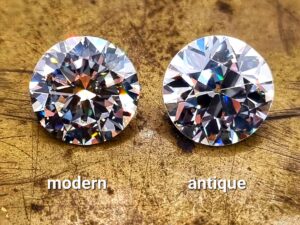Exploring the investment potential of antique diamonds reveals a world where history, rarity, and monetary potential converge. This article offers a comprehensive look at the factors that contribute to their value as investments, from historical significance to market trends. Ideal for collectors, investors, or anyone captivated by these timeless gems, the guide provides key insights into the enduring appeal and financial promise of antique diamonds.
Table of Contents
Historical Significance and Rarity
The allure of antique diamonds extends far beyond their physical beauty, deeply rooted in their historical significance and rarity. Each antique diamond is a testament to the craftsmanship and societal narratives of the era it hails from, often dating back centuries. This connection to the past not only imbues these gems with a unique character but also contributes to their rarity.
Unlike modern diamonds, which are cut and polished using advanced technology, antique diamonds reflect the artistry and techniques of a bygone era, making them scarce and highly sought after. Their rarity is further accentuated by the limited number of such diamonds available in the market, as many have been lost, repurposed, or kept in private collections, adding to their mystique and desirability among collectors and investors alike.
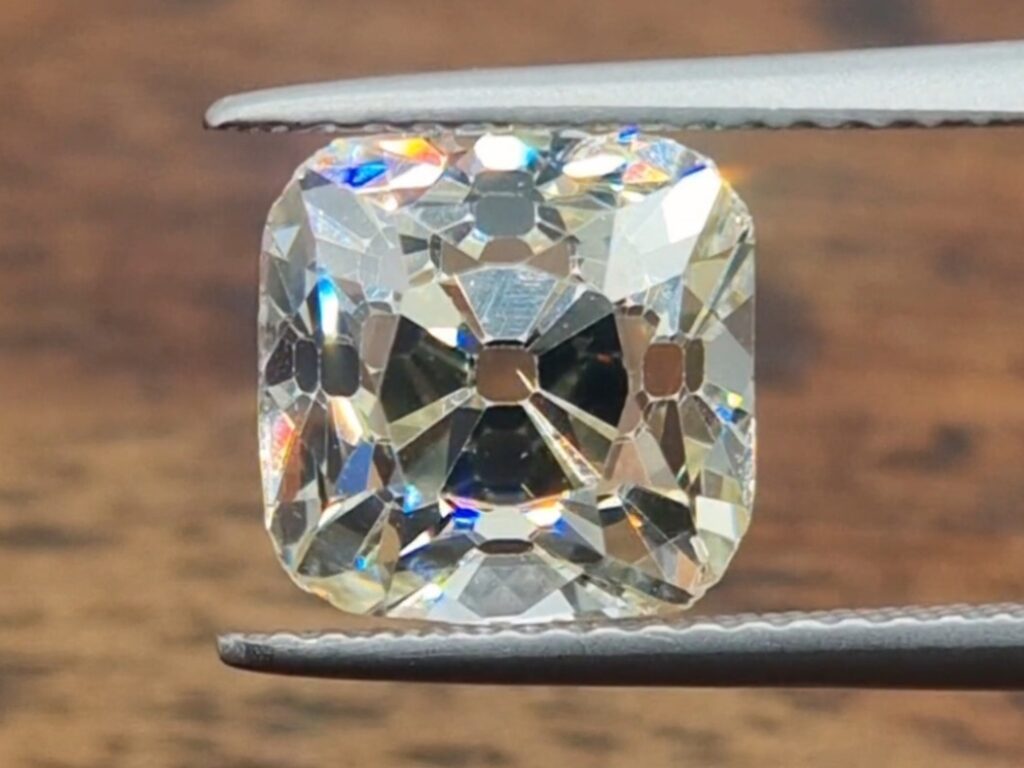
Market Trends in Antique Diamonds
The market for antique diamonds has seen a noticeable shift in recent years, marked by a growing appreciation and demand for these historic gems. This trend is driven by a combination of factors, including the increasing desire for unique, story-rich jewelry and a broader interest in sustainable and ethically sourced gems.
One key aspect of this trend is the rising popularity of antique diamonds among younger generations. Millennials and Gen Z consumers, in particular, are drawn to the uniqueness and character of these diamonds, seeing them as an alternative to the more uniform and mass-produced modern stones. This preference aligns with a broader shift towards individuality and authenticity in fashion and personal expression.
Another significant factor influencing the market is the sustainability aspect. Antique diamonds, being pre-existing and not requiring new mining, are often viewed as a more environmentally and ethically responsible choice. This aspect resonates strongly with consumers who are increasingly conscious of the environmental impact of their purchases.
Investment potential also plays a role in the market trends. As antique diamonds become rarer and more sought after, their value is expected to appreciate over time. This potential for appreciation, combined with their historical significance, makes antique diamonds an attractive option for investors looking for tangible assets with a story.
Overall, the market for antique diamonds is dynamic, influenced by changing consumer preferences, sustainability concerns, and investment considerations. As awareness and appreciation of these gems grow, the market is likely to continue evolving, potentially leading to increased demand and value for antique diamonds.
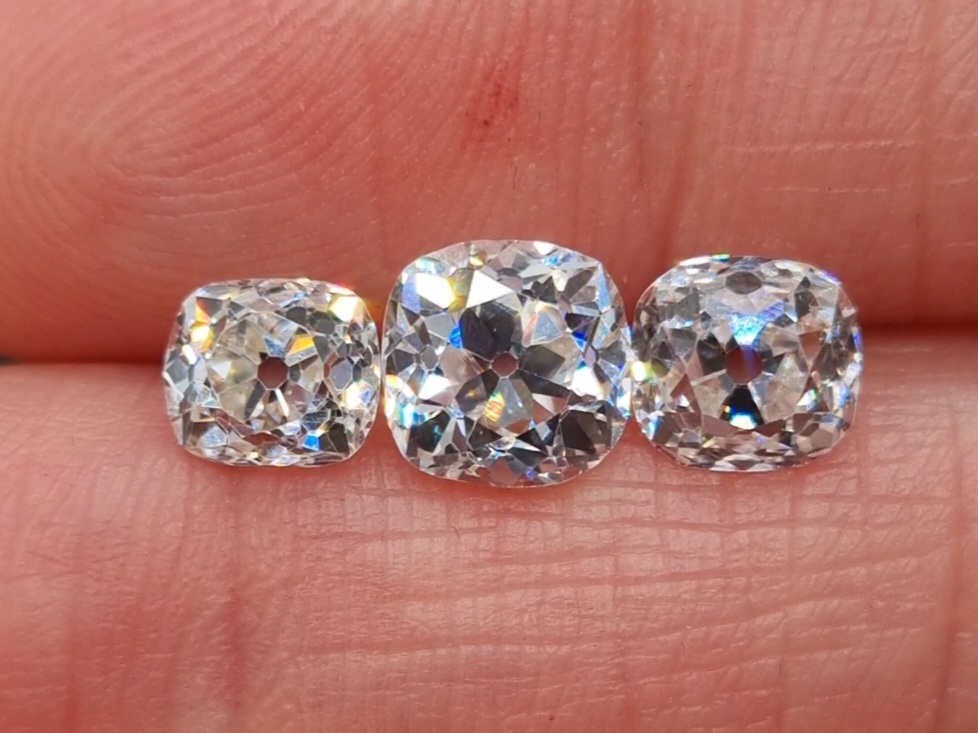
Comparing Antique and Modern Diamonds
The comparison between antique and modern diamonds reveals distinct differences in terms of aesthetics, craftsmanship, and overall appeal, each resonating with different types of collectors and jewelry enthusiasts.
Aesthetic Differences
Antique diamonds are renowned for their unique beauty and charm. They often feature softer, more romantic brilliance compared to the sharp, fiery sparkle of modern diamonds. This difference in light reflection is due to the older cutting styles, such as the Old Mine Cut or the Old European Cut, which you can explore in more detail in the article “The Old Mine Cut” and “The Old European Cut”. These cuts were designed to maximize the diamond’s sparkle under candlelight, unlike modern cuts optimized for electric light.
Craftsmanship and Historical Value
Antique diamonds carry with them a sense of history and tradition. Each piece tells a story, reflecting the craftsmanship of the era in which it was created. This historical value often makes antique diamonds more than just jewelry; they are pieces of art and history. In contrast, modern diamonds, while flawlessly cut with precision, lack this historical narrative. They are valued more for their perfection in cut and clarity, as discussed in “The 4 C’s and Antique Diamonds”.
Market Value and Investment
From an investment perspective, antique diamonds have a unique appeal. Their rarity and historical significance can make them more valuable over time, especially as they become harder to find. Modern diamonds, while also valuable, are more abundant and standardized in the market.
Personal and Emotional Connection
For many collectors and buyers, the choice between antique and modern diamonds often comes down to a personal and emotional connection. Antique diamonds resonate with those who appreciate history, uniqueness, and storytelling in their jewelry, while modern diamonds appeal to those who prioritize perfection in cut and clarity.
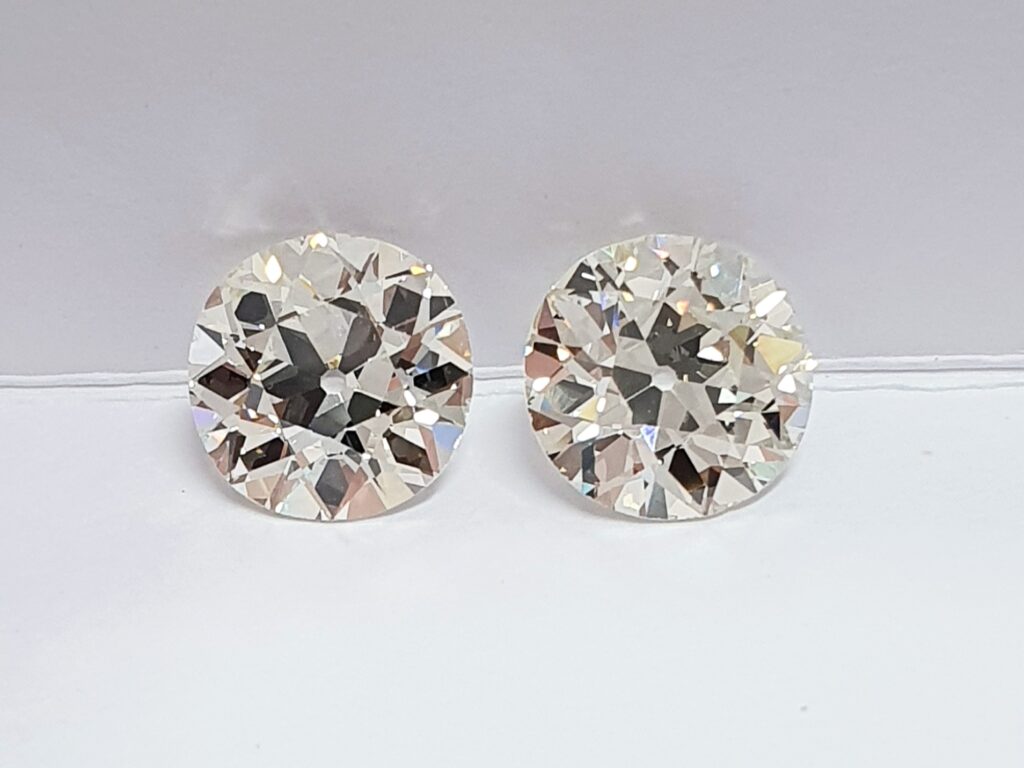
Factors Influencing Value
The valuation of antique diamonds involves a range of factors that go beyond the traditional 4 C’s, providing a more comprehensive understanding of their worth. While color, clarity, and carat weight are crucial in determining their monetary value, other elements also play significant roles.
Historical Context
The era and historical background of an antique diamond greatly influence its value. Diamonds with a rich history or from specific, sought-after periods often command higher prices. This is explored in more depth in “The History of Diamond: An In-Depth Guide.”
Rarity and Distinctiveness
An antique diamond’s rarity, especially in terms of its cut and the period it originates from, is a key factor in its valuation. Unique cuts and shapes like pear, lozenge, or oval are rarer and more valuable than more common shapes like round or square cushions. Particularly old stones showing signs of age but without major damages are highly collectible. Exceptionally, original antiques in whiter colors (H+ grade) are very rare and thus more expensive.
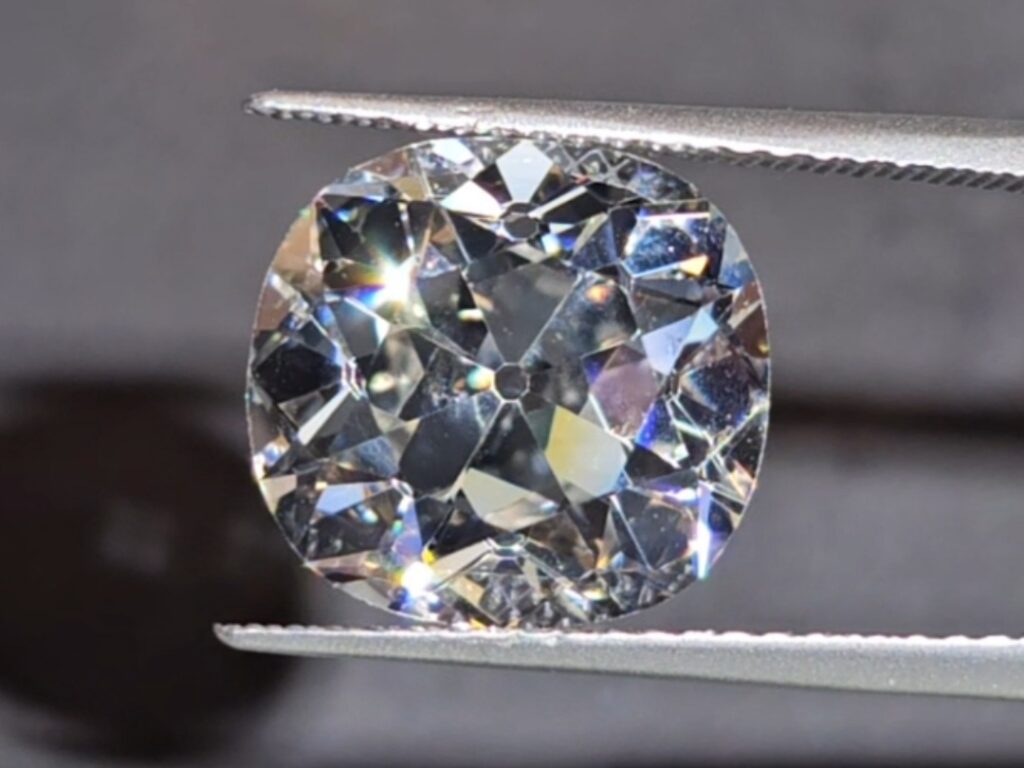
Craftsmanship and Preservation
The craftsmanship of antique diamonds, which reflects individual artisanal skill, significantly influences their value. While minor cracks and scratches that are invisible without magnification are desirable signs of age, major breakages are detrimental. The beauty and craftsmanship of each stone, though subjective, play a major role in its appeal.
Provenance
Provenance can greatly enhance a diamond’s value, though it’s rare for most antique diamonds. An antique jewel may provide clues about the diamond’s origin, but many are unmounted and lack documented history.
Market Trends
Market demand for antique diamonds affects their value. Over the past 20 years, the market for these diamonds has consistently risen. Once considered flawed and often recut into modern brilliants, they are now highly prized. The increasing scarcity and demand suggest that their value will likely continue to rise.
Gemological Factors
The 4 C’s are still relevant in valuing antique diamonds, but with different considerations due to historical cutting techniques. Size, color, and clarity are important, but factors like cut, polish, and symmetry are less pertinent in antique diamonds. For more information, see “The 4 C’s and Antique Diamonds.”
The value of antique diamonds is determined by a blend of historical, aesthetic, and market factors, each contributing to the unique worth of these timeless gems.
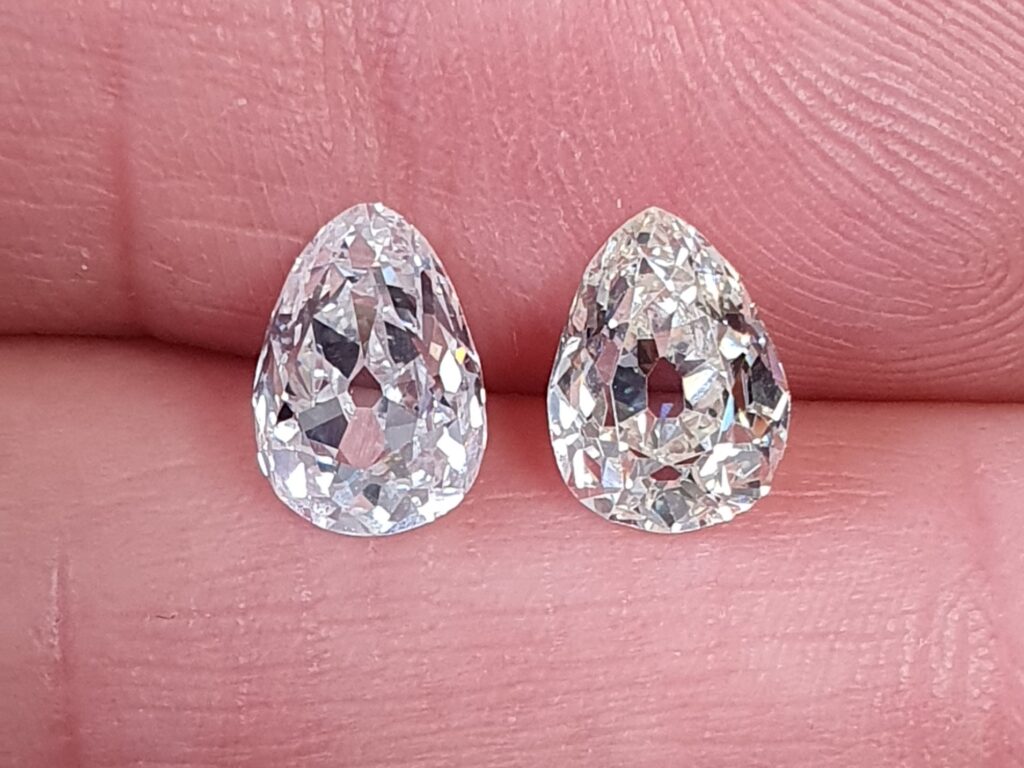
Risks and Considerations
Investing in or collecting antique diamonds, while often rewarding, comes with specific risks and considerations. Being aware of these is crucial for making informed decisions, especially in the niche market of antique diamonds.
Authenticity Concerns
A primary risk in the antique diamond market is the authenticity of the diamonds. Modern replicas and, increasingly, synthetic copies made to resemble antique diamonds pose a challenge. While connoisseurs can usually distinguish these from genuine antiques, they can deceive the untrained eye. A synthetic stone, unlike a real diamond misrepresented as antique, holds almost no value. It’s essential to have any diamond in question analyzed by reputable gemological laboratories like GIA or HRD.
Condition and Preservation
The condition of an antique diamond greatly affects its value. Distinguishing between acceptable signs of age, such as minor scratches that authenticate its antiquity, and significant damage like large cracks is vital. While minor wear can be desirable, major damage can severely impact the stone’s value and may be challenging to repair.
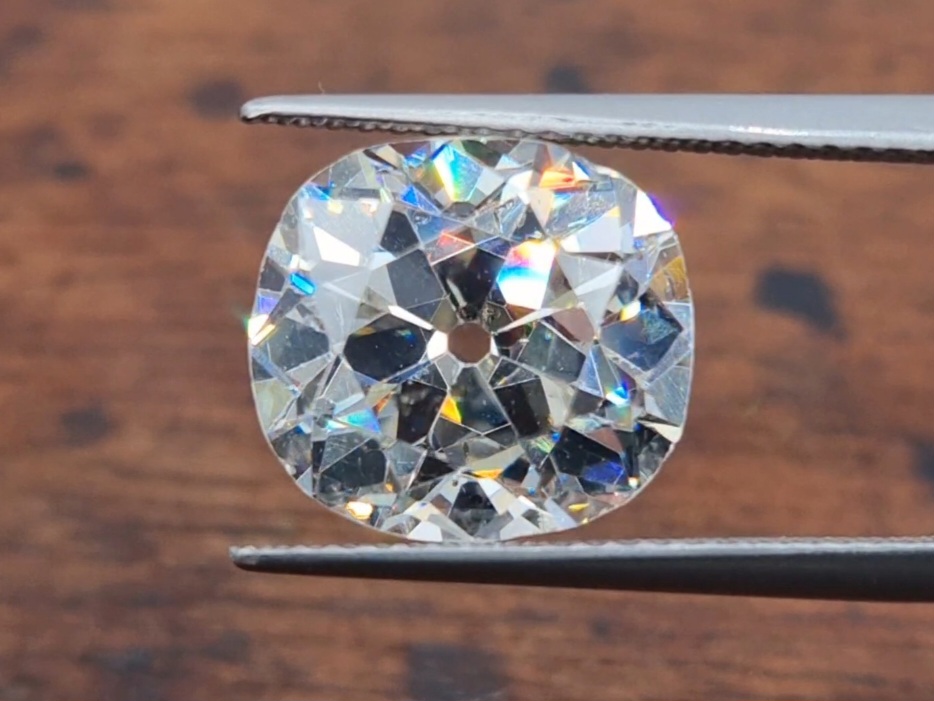
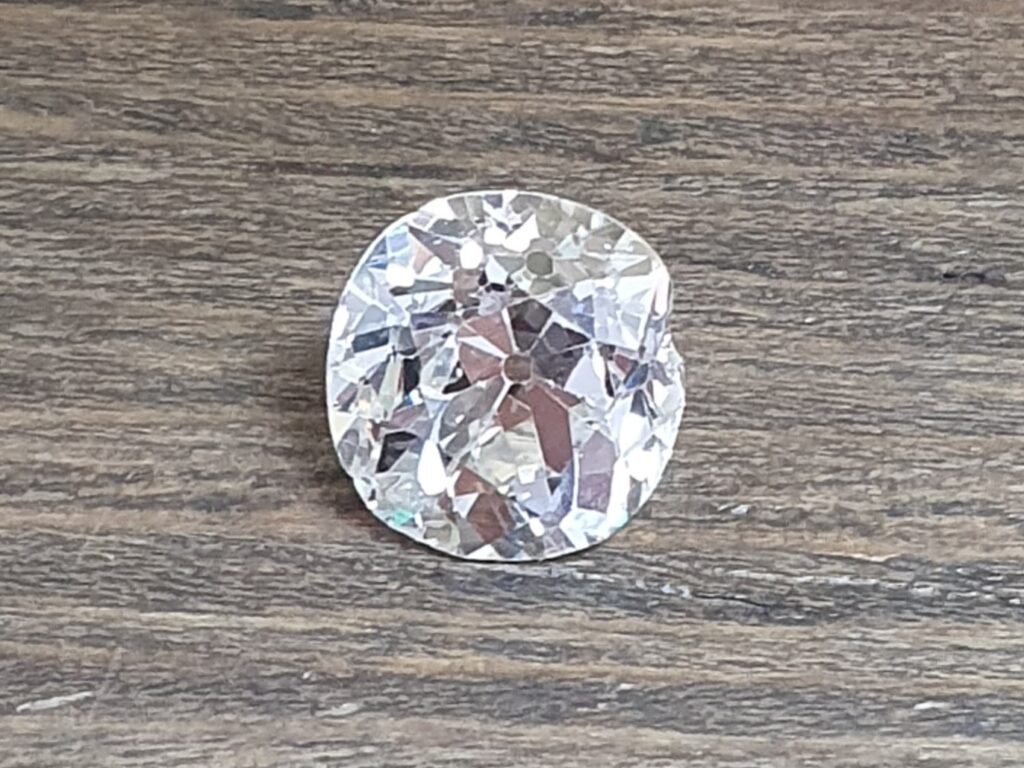
Market Volatility
The market for antique diamonds, though generally trending upwards, can experience short- to mid-term volatility. Demand can fluctuate based on various factors, including economic conditions and changing trends. It’s advisable for non-traders to avoid short- or mid-term resale plans, as the market’s unpredictability can affect investment returns.
Liquidity Concerns
Liquidity can be a concern with antique diamonds. Finding a buyer who understands and appreciates the value of an antique diamond can be time-consuming. Many diamond dealers, outside of those specializing in antique stones, may not fully grasp their true worth.
Gemological Knowledge
In-depth knowledge of both general and antique diamonds is crucial. Understanding their historical context and unique characteristics is key to avoiding overpayment or underestimation of a diamond’s value.
Legal and Ethical Considerations
Ensuring the legal and ethical acquisition of antique diamonds is paramount. This includes being aware of laws and regulations surrounding the trade of antique diamonds.
Navigating the complexities of the antique diamond market requires careful research, expert advice, and a deep understanding of the field. This approach not only safeguards investments but also enhances the experience of owning a piece of history.
The Role of Expert Appraisal and Authentication
In the world of antique diamonds, the expertise of professional appraisers and authenticators is invaluable for determining the true value and authenticity of these historic gems. This process involves a detailed examination by seasoned professionals who specialize in antique jewelry and gemstones.
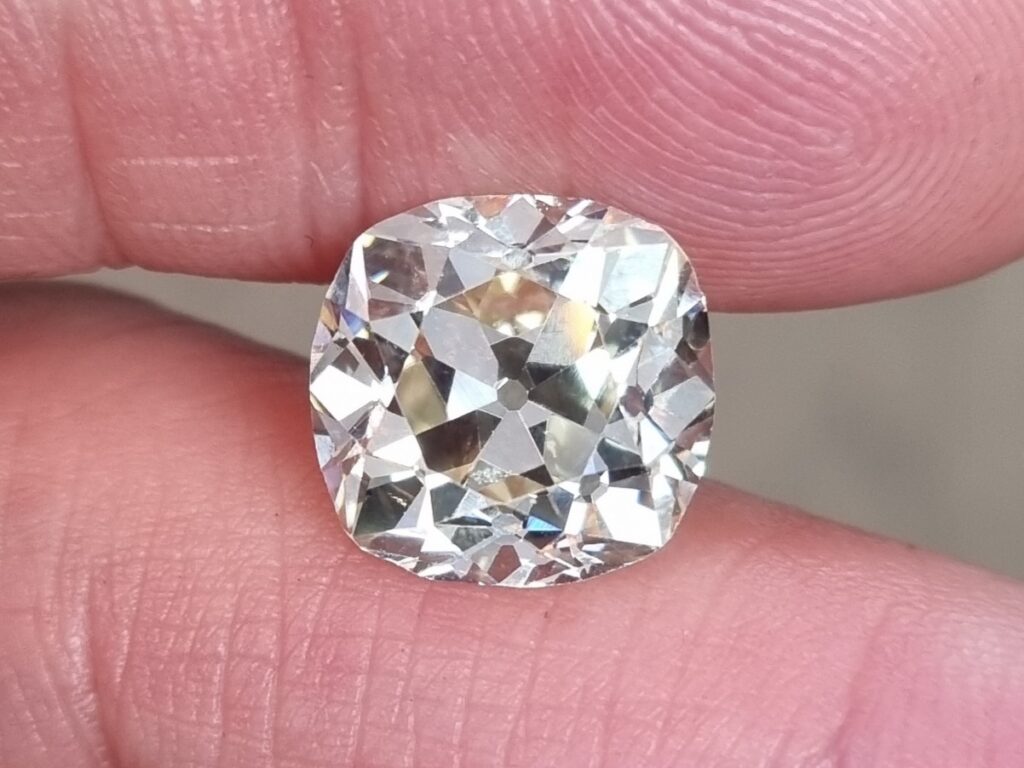
Expert Appraisal
Expert appraisers assess the diamond’s worth based on its weight, color, clarity and general proportions. For antique-cut diamonds, they will also assess its historical context, rarity, craftsmanship, and condition. They look for specific characteristics that indicate a diamond’s age and authenticity.
Authentication Process
Authentication is crucial in confirming that a diamond is genuinely antique. This involves examining the diamond’s physical properties and, when available, its provenance. Experts in antique diamonds combine historical knowledge with gemological expertise to authenticate a diamond, distinguishing between genuine antiques and modern replicas or synthetic copies.
Importance in the Market
Accurate appraisal and authentication build trust in the market, providing assurance to buyers and collectors that they are investing in genuine pieces. The findings of these experts can significantly influence a diamond’s market value, with rare and well-preserved antiques being valued much higher.
Choosing the Right Expert
Selecting an expert who specializes in antique diamonds is important, as they have the specific skills and knowledge required for accurate appraisal and authentication. The credibility and reputation of the appraiser or authenticator are crucial, and it’s recommended to seek professionals with recognized credentials and a proven track record in the field.
Future Outlook for Antique Diamond Investments
The prospects for investing in antique diamonds are increasingly positive, influenced by a variety of factors that point towards a sustained rise in their value and appeal.
Enhanced Appreciation for Historical Value
The trend of valuing the historical significance and unique craftsmanship of antique diamonds is growing among collectors and investors. This heightened appreciation, evident in the successful auction results and the use of antique diamonds by jewelry designers and brands, is expected to boost their demand further.
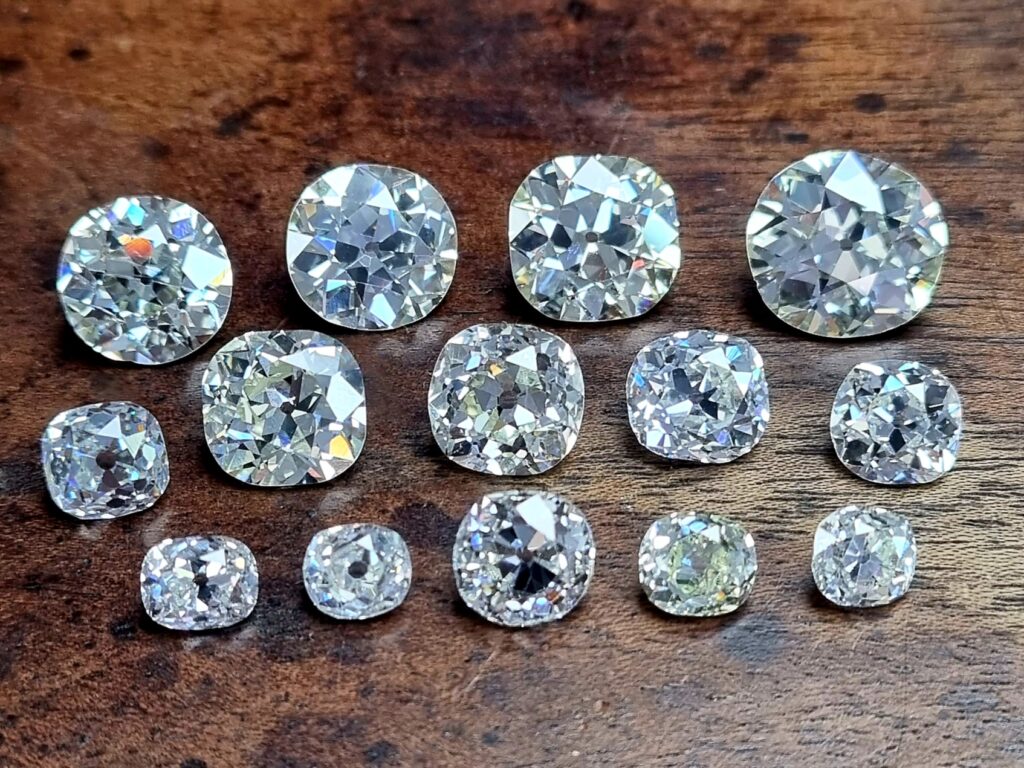
Rarity and Diminishing Availability
The inherent rarity of antique diamonds, due to their finite number, ensures their continued desirability. Particularly, larger sizes, whiter colors, and unusual proportions are becoming increasingly scarce, which is likely to enhance their long-term value.
Ethical and Sustainable Appeal
The shift towards ethical and sustainable choices in jewelry is positively impacting the antique diamond market. Their appeal as recycled gems that require no new mining is attracting a new generation of environmentally conscious buyers, particularly among younger consumers who represent the future market.
Stability Amidst Economic Fluctuations
While susceptible to short-term market fluctuations, the unique and historical nature of antique diamonds generally renders them a stable investment. Their uniqueness and irreplaceability set them apart from commoditized modern cuts, underlining their individual value.
Digital Accessibility and Global Reach
The advent of digital platforms and online auctions has made antique diamonds more accessible to a worldwide audience. This increased visibility and ease of access are likely to stimulate broader interest and demand for these exquisite gems.
Conclusion
The investment landscape for antique diamonds presents a compelling picture, marked by a growing appreciation for their historical significance, craftsmanship, and unique stories. As these timeless treasures become rarer and the demand for sustainable and ethically sourced gems rises, antique diamonds stand out as both a link to our past and a wise investment for the future. Their inherent rarity, coupled with the increasing ease of global access through digital platforms, positions them favorably in the market. For collectors, investors, and enthusiasts alike, antique diamonds offer not just a piece of history but a potentially stable and appreciating asset in the ever-evolving world of fine jewelry.
Additional Resources
For those looking to deepen their understanding of antique diamonds and their investment potential, the following resources offer valuable insights and information:
- Books on Antique Diamonds and Jewelry: Titles like “Diamonds: An Early History of the King of Gems” by Jack Ogden and “Investing in Antique Jewelry” provide in-depth knowledge about the historical and investment aspects of antique diamonds.
- Online Auction House Catalogs: Auction houses such as Sotheby’s and Christie’s offer catalogs and past auction results that can be educational for understanding the market trends and values of antique diamonds.
- Gemological Institutes: Organizations like the Gemological Institute of America (GIA) and HRD Antwerp offer resources and courses on diamond grading and history, which are beneficial for understanding the nuances of antique diamonds.
- Antique Jewelry Forums and Communities: Platforms such as Instagram and Facebook can be incredibly useful educational tools for learning about antique diamonds. Don’t hesitate to get into contact with reputable accounts and ask questions.
- Museum Collections: Visiting museum collections that feature antique jewelry, such as the Victoria and Albert Museum in London or the Smithsonian in Washington, D.C., can provide a visual and historical understanding of antique diamonds.
- Professional Appraisers and Gemologists: Consulting with professionals who specialize in antique jewelry can offer personalized insights and evaluations of antique diamonds, aiding in investment decisions.


